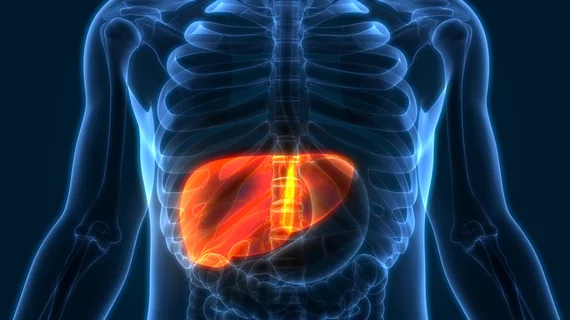MRI biomarkers less invasive, more accurate option for identifying deadly liver disease
Historically, percutaneous liver biopsy is used to diagnose non-alcoholic fatty liver disease (NAFLD). But a new study published in Clinical Gastroenterology and Hepatology suggests MRI biomarkers may better identify patients most at risk of disease progression.
In the United States, NAFLD affects up to 25% of the population. And over time, the condition can progress into non-alcoholic steatohepatitis (NASH), which can lead to severe liver damage, cancer, and even death.
Experts pooled data from five clinical studies of patients with suspected NAFLD, totaling 543 participants. They assessed the accuracy of MRI biomarkers by comparing area under the receiver operating characteristic curve scores, using cT1 versus MRI liver fat to identify NASH patients.
They noted an increase in cT1 and MRI liver fat in patients considered to have more severe NAFLD. The accuracy of cT1 in identifying those with NASH was an AUC of 0.78, and was superior to MRI liver fat. The accuracy did not seem to increase significantly when cT1 and MRI liver fat were combined. In addition, the study showed cT1 was higher in patients who had already been classified by biopsy as high-risk NASH, confirming suspected results.
“Non-invasive multiparametric MRI measures of fat (PDFF) and fibroinflammation were both excellent biomarkers for identifying those with NASH in the cohort with suspected NAFLD. As anticipated, cT1 was superior for identifying patients at higher risk of disease progression, as cT1 correlates with fibrosis and PDFF does not,” Andrea Dennis, PhD, a biomarker scientist at Perspectum Ltd., said in an interview with The Reading Room.
This less invasive method of predicting the progression of NAFLD to NASH is positive news for patients who are looking to avoid the discomfort associated with biopsy in the pursuit of a diagnosis. Since MRI results are available sooner than pathology reports, this method could lead to earlier treatment, which could prolong progression of the disease and improve overall prognosis.

